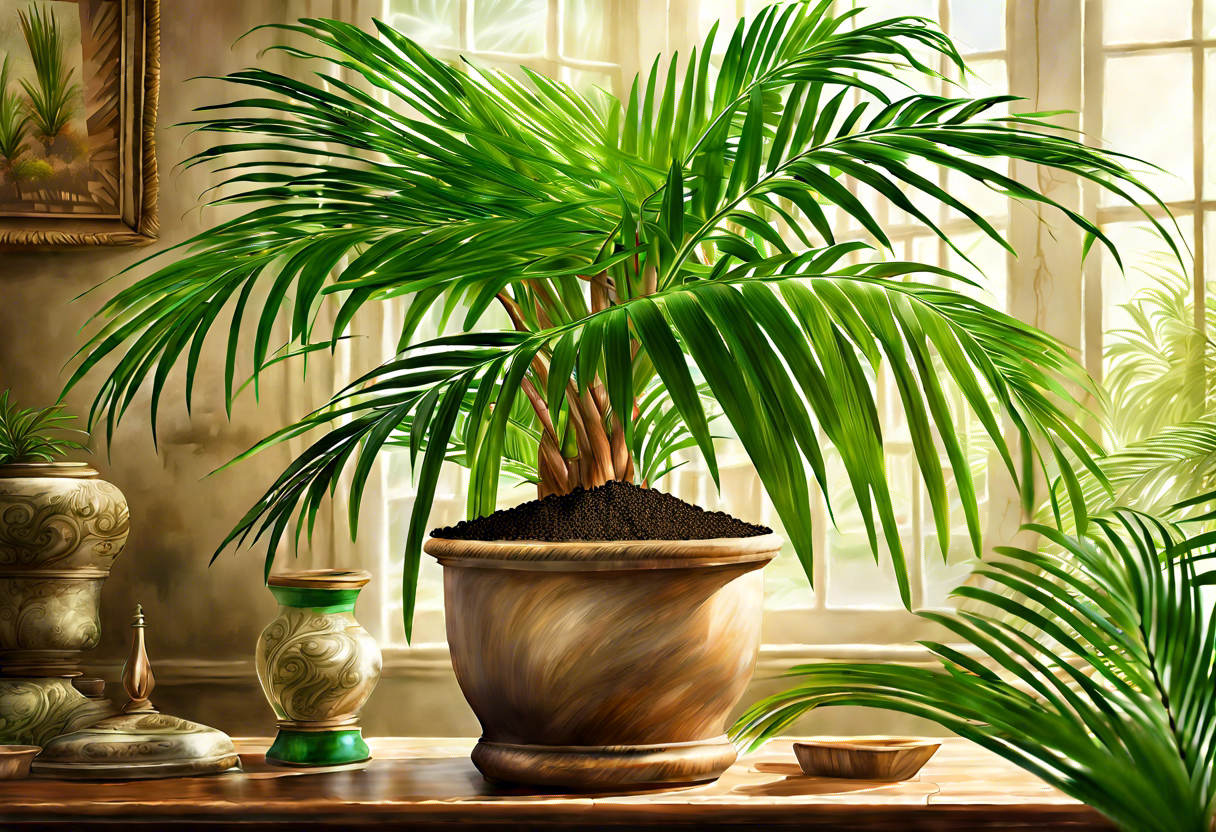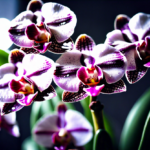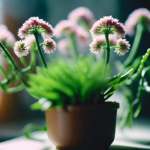Importance of Choosing the Right Soil or Potting Mix for Parlor Palm
When it comes to keeping your Parlor Palm (Chamaedorea elegans) healthy and thriving, choosing the right soil or potting mix is of utmost importance. The soil composition plays a crucial role in providing essential nutrients, proper drainage, and aeration for the plant’s roots. By understanding the factors to consider and selecting the best soil mix, you can ensure the optimal growth and overall well-being of your Parlor Palm.
The first factor to consider when selecting soil for your Parlor Palm is its ability to retain moisture without becoming waterlogged. Parlor Palms prefer a well-draining soil mix to prevent root rot. A good soil mix should have a balanced moisture-holding capacity, allowing water to permeate through the soil and drain away excess moisture. This will prevent the roots from sitting in water, reducing the risk of issues such as fungal diseases.
Another important consideration is the nutrient requirements of the Parlor Palm. These plants thrive in a soil mix that is rich in organic matter and nutrients. Organic matter helps improve soil fertility, enhances moisture retention, and promotes beneficial microbial activity. It also aids in the slow release of nutrients, providing a steady supply to the plant over time. A balanced potting mix that includes organic materials such as compost, peat moss, or well-rotted manure can provide the necessary nutrients your Parlor Palm needs to flourish.
Choosing the right soil composition is also vital. Parlor Palms prefer a slightly acidic to neutral soil pH ranging from 6.0 to 7.0. A high-quality potting mix suitable for Parlor Palms should have a pH within this range. Additionally, it should have excellent drainage properties to prevent waterlogging, as mentioned earlier. A well-draining mix will allow air to reach the roots, facilitating their respiration process and preventing root suffocation.
When it comes to soil types and potting mix options, there are several choices available. One option is to use a pre-packaged potting mix designed specifically for indoor plants. These mixes often contain a blend of peat moss, perlite, vermiculite, and other ingredients that provide good drainage and aeration. Alternatively, you can create your own potting mix by combining equal parts of peat moss, perlite, and vermiculite. This mixture provides a well-balanced medium that retains moisture while allowing excess water to drain away.
Selecting the best soil or potting mix for your Parlor Palm is crucial for its overall health and growth. Ensure the soil retains moisture without becoming waterlogged, provides essential nutrients, has an appropriate pH level, and promotes proper drainage. By choosing a well-suited soil mix and incorporating it into your regular care routine, you can provide the optimal conditions for your Parlor Palm to thrive.
Factors to Consider When Selecting Soil for Parlor Palm
Choosing the right soil or potting mix is crucial for the healthy growth and development of your Parlor Palm (Chamaedorea elegans). The soil composition plays a significant role in providing the necessary nutrients, drainage, and aeration for the plant. Here are some important factors to consider when selecting soil for your Parlor Palm:
1. Well-draining: Parlor Palms prefer well-draining soil to prevent waterlogging and root rot. It is important to choose a soil mix that allows excess water to drain away easily, as the palm’s roots can quickly rot if they are constantly sitting in wet soil. Look for soil mixes that contain ingredients like perlite or sand to improve drainage.
2. Moisture retention: While Parlor Palms require good drainage, they also need sufficient moisture to thrive. The soil mix should be able to retain moisture without becoming waterlogged. Opt for a soil mix that contains organic matter such as peat moss or coco coir, as these materials help retain moisture while still allowing excess water to drain away.
3. Nutrient-rich: Parlor Palms require a balanced supply of nutrients to support their growth. Choose a soil mix that is enriched with organic matter or slow-release fertilizers. These nutrients will gradually release into the soil, providing a steady supply to the roots. Avoid using heavy doses of fertilizer, as it can lead to nutrient burn and damage the plant.
4. pH level: Parlor Palms prefer slightly acidic to neutral soil with a pH range between 6 and 7. Conduct a soil test to determine the pH level and choose a soil mix that falls within this range. If the soil is too acidic or alkaline, it can impede the plant’s ability to absorb nutrients.
5. Sterility: It is essential to use sterile soil or potting mix to avoid introducing harmful pests or disease-causing organisms to your Parlor Palm. Ensure that the soil mix you choose has been sterilized or pasteurized to eliminate any potential threats.
6. Texture: The texture of the soil mix is also important for Parlor Palms. It should be loose and well-aerated to promote root growth and prevent compaction. Avoid dense, clumpy soil mixes that can restrict the movement of air and water within the root zone.
By considering these factors when selecting soil for your Parlor Palm, you can create a suitable growing environment that supports its overall health and vitality. Remember to repot your Parlor Palm every 2-3 years, as the soil can become depleted of nutrients over time. With the right soil or potting mix, your Parlor Palm will thrive and add beauty to your indoor space.
Best Soil Composition and Nutrient Requirements for Parlor Palm
When it comes to caring for your Parlor Palm (Chamaedorea elegans), choosing the right soil composition and providing the necessary nutrients is crucial for its overall health and growth. This tropical plant thrives when provided with a well-draining potting mix that mimics its natural habitat. In this article, we will explore the best soil composition and nutrient requirements for your Parlor Palm, ensuring that it flourishes in your indoor space.
The ideal soil composition for Parlor Palm consists of a mixture of peat moss, perlite, and sand. Peat moss provides excellent water retention properties while also improving the overall texture and structure of the soil. Perlite, on the other hand, helps with drainage and aeration, preventing the roots from becoming waterlogged. sand aids in improving the soil’s drainage capabilities, ensuring that excess water doesn’t accumulate around the roots.
In terms of nutrient requirements, Parlor Palm thrives in slightly acidic to neutral soil. Adding organic matter such as compost or well-rotted manure can enrich the soil and provide essential nutrients for the plant’s growth. slow-release fertilizers specifically formulated for houseplants can also be beneficial. These fertilizers release nutrients gradually, ensuring a steady supply of essential elements without the risk of burning the plant’s roots.
When potting your Parlor Palm, make sure to choose a container with drainage holes to prevent waterlogging. Fill the pot with the prepared soil mix, leaving enough space for the plant’s roots. Gently place the plant in the pot, making sure to position it at the same depth it was previously growing. Lightly pat down the soil around the base of the plant, ensuring that it is stable and well-supported.
It’s important to note that Parlor Palms prefer indirect sunlight and can tolerate lower light conditions, making them ideal for indoor environments. However, they still require proper lighting to thrive. Place your Parlor Palm in a bright, well-lit area, away from direct sunlight. This will provide the plant with the right amount of light to stimulate growth and prevent it from becoming leggy or spindly.
Selecting the best soil composition and meeting the nutrient requirements are key to the overall health and success of your Parlor Palm. Remember to use a well-draining potting mix, enriched with organic matter, and provide the necessary nutrients through slow-release fertilizers. By following these guidelines, you can create an optimal environment for your Parlor Palm to thrive and bring a touch of greenery indoors.
Types of Soil and Potting Mix Options for Parlor Palm
Choosing the right soil or potting mix is crucial for the health and growth of your Parlor Palm (Chamaedorea elegans). The proper soil composition ensures that the plant receives the necessary nutrients, moisture, and support for its root system. Depending on your specific requirements and the growing conditions of your Parlor Palm, there are different types of soil and potting mix options available.
1. Well-draining soil: Parlor Palms thrive best in well-draining soil. This type of soil allows excess water to flow away freely, preventing root rot and other water-related diseases. You can create a well-draining soil mix by combining equal parts of loam, sand, and peat moss.
2. Commercial potting mix: Another option is to use a commercial potting mix specifically formulated for indoor plants. Look for a mix that contains organic matter, such as peat moss or compost, which helps retain moisture and provides essential nutrients for the Parlor Palm.
3. Loamy soil: Parlor Palms also do well in loamy soil, which is a combination of sand, silt, and clay. Loamy soil has excellent drainage and moisture-retaining properties, making it suitable for the plant’s growth.
4. Perlite-based mix: If you prefer a lightweight potting mix, you can opt for a mix that includes perlite. Perlite is a volcanic rock that has been heated and popped like popcorn. It improves aeration and drainage while still retaining some moisture.
5. Cactus or succulent mix: Parlor Palms can also thrive in a cactus or succulent mix, which is well-draining and contains a higher percentage of sand. This type of mix allows water to pass through quickly, preventing waterlogged soil.
It’s essential to note that regardless of the type of soil or potting mix you choose, it’s crucial to use a pot with drainage holes to prevent water retention. These drainage holes allow excess water to escape, ensuring the roots don’t become waterlogged.
Organic matter into the soil or potting mix is also beneficial for the Parlor Palm’s growth. Organic matter, such as compost or well-rotted manure, provides additional nutrients and improves soil structure.
Regularly monitoring the moisture levels in the soil and adjusting watering accordingly is key to maintaining a healthy Parlor Palm. Overwatering can lead to root rot, while underwatering can cause the plant to wilt and lose vitality.
By selecting the right soil or potting mix for your Parlor Palm and providing the necessary care, you can ensure that your plant thrives and adds beauty to your indoor space for years to come.
Tips for Properly Potting and Maintaining Parlor Palm with the Best Soil Mix
Parlor palm (Chamaedorea elegans) is a popular houseplant known for its slender, arching fronds and ability to thrive indoors. To ensure the best growth and health for your parlor palm, it’s important to choose the right soil or potting mix. The type of soil you use can directly impact the plant’s overall well-being, including its ability to absorb nutrients and retain moisture.
Here are some tips to help you properly pot and maintain your parlor palm with the best soil mix:
Selecting the Right Soil Composition
1. Well-Draining: Parlor palms prefer well-draining soil to prevent waterlogging and root rot. Choose a potting mix that contains materials like perlite, vermiculite, or sand to improve drainage.
2. Organic Matter: organic matter into the potting mix is beneficial as it improves the soil’s structure, moisture retention, and nutrient availability. Consider using materials such as peat moss, coconut coir, or compost for optimal results.
3. Nutrient-Rich: Parlor palms require a balanced supply of nutrients to support healthy growth. Look for a potting mix that contains a slow-release fertilizer or mix in a controlled-release fertilizer to provide essential nutrients over an extended period.
The Best Soil Mix Options
1. All-Purpose Potting Mix: An all-purpose potting mix is readily available in garden centers and is suitable for most houseplants, including parlor palms. It usually consists of a blend of peat moss, vermiculite, and perlite, providing good drainage and moisture retention.
2. DIY Mix: If you prefer a customized soil mix, you can make your own by combining equal parts of compost, peat moss or coconut coir, and perlite or vermiculite. This DIY mix allows you to control the composition and tailor it to your parlor palm’s specific needs.
3. Cactus or Succulent Mix: A cactus or succulent mix is another suitable option for parlor palms. It typically contains materials like sand, perlite, and pumice, which promote excellent drainage. However, it’s important to provide supplemental nutrients by fertilizing regularly, as these mixes may not contain sufficient nutrients for long-term plant health.
Potting and Maintenance Tips
1. Choosing the Right Pot: Select a pot that provides adequate drainage holes and is only slightly larger than the root ball of your parlor palm. The pot’s size directly affects soil moisture levels, and a container that is too large can retain excess water, increasing the risk of root rot.
2. Watering: Water your parlor palm thoroughly, allowing the soil to dry slightly between waterings. Stick your finger about an inch deep into the soil; if it feels dry, it’s time to water. Avoid overwatering, as it can lead to root rot.
3. Fertilizing: Feed your parlor palm with a balanced, water-soluble fertilizer during the growing season, typically spring to early fall. Follow the package instructions for application rates and frequency. Be cautious not to overfertilize, as it can cause salt buildup and damage the plant.
4. Light and Temperature: Parlor palms thrive in moderate to bright, indirect light. Avoid placing them in direct sunlight, as it can scorch the leaves. Keep the plant in a room with temperatures between 60-80°F (15-27°C) for optimal growth.
By following these tips and choosing the best soil mix for your parlor palm, you can provide a favorable growing environment that promotes its health and beauty. Remember to monitor your plant’s moisture levels, light exposure, and nutrient requirements to ensure its long-term well-being.
Conclusion
Selecting the best soil or potting mix for your Parlor Palm (Chamaedorea elegans) is crucial for its overall health and growth. By understanding the importance of choosing the right soil and considering various factors, you can provide your Parlor Palm with the ideal growing conditions.
Choosing the right soil or potting mix is essential for Parlor Palm because it directly impacts its growth, health, and overall well-being. The soil serves as the foundation for the plant, providing the necessary nutrients, moisture retention, and aeration for optimal growth. By using the right soil, you can ensure that your Parlor Palm thrives and remains healthy for years to come.
Several factors should be considered when selecting soil for your Parlor Palm. These include water drainage, pH levels, and nutrient composition. Parlor Palms prefer well-draining soil that allows excess water to escape, preventing root rot. Additionally, maintaining a slightly acidic soil with a pH level between 5.5 and 7 promotes nutrient absorption and overall plant health.
The best soil composition for Parlor Palm typically consists of a mixture of peat moss, perlite or sand, and organic matter. Peat moss provides moisture retention and aeration, promoting healthy root development. Perlite or sand improves drainage and prevents soil compaction, ensuring that the roots receive enough oxygen. Adding organic matter such as compost or decomposed leaves enriches the soil with essential nutrients.
While there are numerous soil and potting mix options available, a popular choice for Parlor Palm is a well-balanced commercial potting mix. These mixes are specifically formulated to provide the necessary nutrients and drainage for indoor plants. Alternatively, you can create your own mix by combining equal parts peat moss, perlite, and compost for a nutrient-rich substrate.
When potting your Parlor Palm, ensure that the pot has drainage holes to prevent waterlogged soil. Choose a pot that allows for future growth and has enough room for the root system. After potting, water your Parlor Palm thoroughly and allow excess water to drain out before returning the plant to its desired location. Remember to water the plant only when the top inch of soil feels dry to the touch.
To maintain your Parlor Palm’s optimum health, it is essential to monitor moisture levels and adjust watering accordingly. Additionally, regularly fertilize your plant using a balanced liquid houseplant fertilizer during the growing season. Pruning any yellow or brown leaves and dusting the plant regularly will help maintain its aesthetic appeal.
By following these guidelines and selecting the best soil or potting mix for your Parlor Palm, you can ensure that it thrives in your indoor space. Remember to provide the right growing conditions, regularly monitor its moisture levels, and offer proper care to enjoy the beauty and benefits of this elegant plant for years to come.


